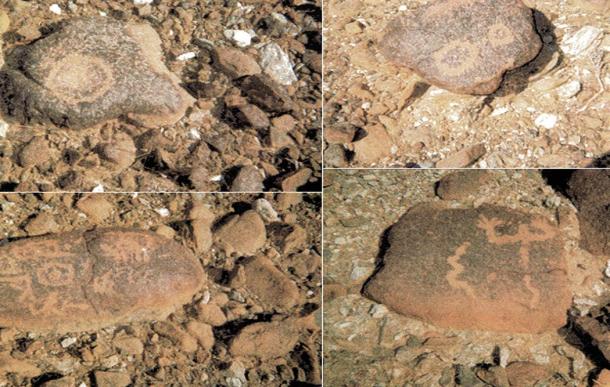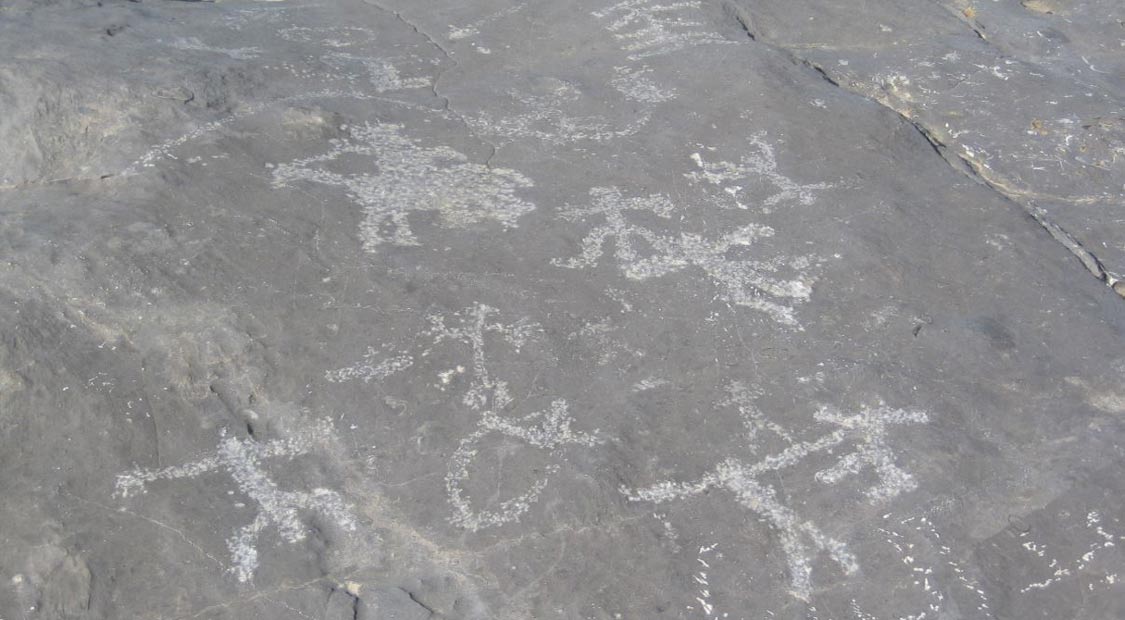The Disappearing Petroglyphs of the UAE: An ongoing and avoidable tragedy
The cultural heritage of Syria is being deliberately destroyed by militants and extremists using bulldozers and explosives. In the United Arab Emirates (UAE), history is also being destroyed by bulldozers and explosives—but this time in the name of ‘progress’.
The Hajar Mountains of the northern and eastern Emirates are particularly rich in rock art of petroglyphs, most of them only discovered in the last 20 years. So far around 500 petroglyphs have been identified at 70 different sites, most of them in Fujairah and Ras al Khaimah. They most often show animals and people, sometimes hunting scenes or battles, and sometimes geometric designs.

Fujairah mountain view. (CC BY-SA 3.0)
Tragically Disappearing Petroglyphs
Tragically, hundreds of these petroglyphs have been destroyed in the last five years through quarrying of stone in order to build roads and artificial offshore islands, such as the Palm Island and The World Islands in Dubai.

The entirely man-made island resort, “Palm Island” in Dubai, UAE 2005. (Public Domain)
While the petroglyphs are not as magnificent or as large as the ruins of Palmyra, they contain unique clues as to life of people in the Iron Age in the area.
- Is there truth to the Bedouin Legend of the Great River in the Desert?
- The Lost Desert Cities of Dubai: The Hidden History
- Builders destroy 2,300-year-old Mayan pyramid to make new road

Rock art in the Hajar Mountains. Credit: Bradshaw Foundation
Australian archaeologist Dr. Michele Ziolkowski has almost single-handedly led an effort to record as many as possible, alone at first but more recently joined by archaeologists from Fujairah Museum.
Prehistoric Markings Chronical Life and Times
Dating of the petroglyphs is difficult, as unlike many archaeological remains they cannot be radiocarbon dated either by objects found together with them, or by their position within the earth. But is believed they were mostly made in the Arabian Iron Age between 1300 and 300 BC, and some later in the Islamic period.
One of the most interesting aspects is that many show animals which are now extinct in the region, including leopards, hyenas, gazelle, cattle and the oryx, so these petroglyphs have value as a record of past environment as well as for their artistic merit. As such they are the closest thing we have to a written record of events from the region during the Iron Age.
In one case a petroglyph showing a battle scene was found near a large number of graves, presumably depicting a massacre of some sort.
- All is not lost in ISIS’s attempt to smash the past
- Ancient Rock Walls and Formations in Australia may have dramatic implications - Part 1
- Linguists Finally Unravelling the Mysteries Trapped Within Mayan Hieroglyphs

Rock art and dot carvings at Jebel Jassassiyeh (Qatar) dating to c. 4000 BC. (CC BY 2.0)
The petroglyphs have been interpreted in a number of ways. Some believe that many are tribal markings indicating territorial boundaries, others that they are markers for burial sites or indicate directions to water sources or villages, or that they record significant historical events such as battles or massacres.
Preserving the Petroglyphs
In April this year the government began discussing a new law which would impose stiff penalties for anyone destroying artifacts or archaeological sites, although when this will become law and whether it will include rock art is not clear. It can’t come too soon, because in the meantime some of the UAE’s most interesting history is being turned into road-fill.
Featured image: Petroglyphs in the Hajar Mountains. Photo © David Millar
By David Millar
References
Beyond Dubai: Seeking Lost Cities in the Emirates, David Millar, Melting Tundra Publishing, 2014
UAE antiquities law would impose up to Dh10m in fines and imprisonment, The National, 14 April 2015, http://www.thenational.ae/uae/heritage/uae-antiquities-law-would-impose-up-to-dh10m-in-fines-and-imprisonment
Rock Art in the Southern Gulf, M. Jongbloed, Al Shindagah, May/Jun 2002
Rock on art: petroglyph sites in the United Arab Emirates, M.Ziolkowski, Arabian Archaeology and Epigraphy, 208-238, 2007

















Comments
Any updates on this fascinating subject are more then welcome!
The Bradshaw Foundation has an extensive listing of petroglyphs of the Gulf area.
Without scientific data, conclusions remain conjecture.
While producing a documentary on the early opening up of Qatar, in 1978, I was aware that their heritage was quickly being destroyed for “modernization”.
This was in a time when the only public display of green grass was in a traffic circle with a small patch of “lawn”.
Just like Canada’s long gone old log cabins, Qatar was bulldozing their bygone gulf-side towns with their unique architecture styles and building materials for modern air-conditioned cement block homes.
They didn’t see why some of these buildings and towns should be conserved.
More buildings, more roads, more everything … but no more ancient heritage.
I’m surprised the rock art of Jebel Jassassiyeh is still there and not in some concrete block.
Without scientific data, conclusions remain conjecture.